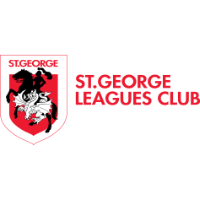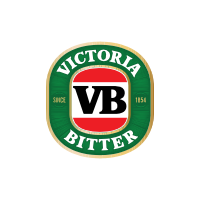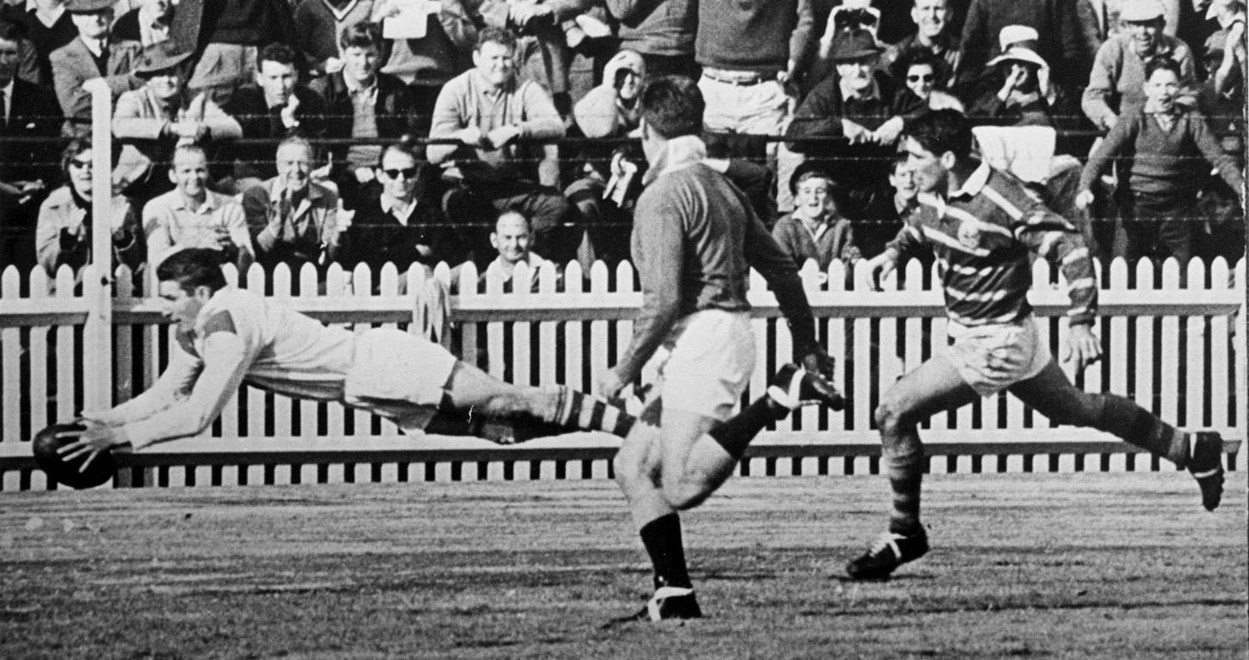

Graeme Langlands was a shy kid from Wollongong when he joined the mighty St George club in the midst of their 11-year run as the undisputed premiership kings.
He went on to become one of the all-time greats, reaching Immortal status in 1999 after narrowly missing selection among the original Immortals in 1981.
He played 227 games for the Dragons over a 14-year career and captained Australia 15 times.
This is the story of how he rose through the ranks on his way to signing with St George.
This is the first of a three-part piece on Langlands which ran over three Rugby League Week issues on June 28, July 5 and 12, 1975. It was titled "The Mighty Chang", written by Philip Jenkins.
Graeme Frank Langlands was a skinny kid in the days when World War I was swinging in the balance — and no-one knew what quite the future held.
Wollongong hasn't spawned such a son since the enigmatic Norman Gunston came along recently to keep the name of the 'Gong high in the headlines.
Chang, favourite son of everyone who calls himself a St George fan, first saw the light of day September 2, 1941.
Graeme Langlands' Immortal career
He was born to Zell and Bill Langlands who were then living at Corrimal Street, Wollongong, deep in the heart of Rugby League territory, with the tang of the Port Kembla steelworks in the air.
He was an ordinary kid. A pushing, shoving short-back-and-sides kid who didn't do what he was told and loved a scrap better than anything.
No one knew that that young Graeme was to sustain the most amazing record a Rugby League player has ever since the game creaked off the mark back in 1908.
But even as a marble-playing, socks-around-the-ankles kid Chang showed the first signs of his love for Rugby League, the game that was to shape and dictate his life.
As a kid he would zip along the Wollongong streets side-stepping people as they strolled by. The Langlands side-step, a Rugby League marvel for more than a dozen years, was born.
Once he side-stepped too far in a Wollongong Park, hit a pole and knocked himself out.
Chang first played League when he was about eight. His first memories of League are of running on at half-time with junior teams during big match breaks and giving the mob something to watch while they waited for the stars to come back on.
The young Chang raged around Wollongong like most kids his age. He went to school there — Wollongong primary and then Wollongong tech with a brief sojourn at a Sydney college sandwiched in the middle.
At Wollongong tech he studied through to the intermediate certificate, and then headed out into the world.
Panel beating was the trade he settled on. For £3/5/- when he started, and £5 when he finished, the young Chang learned the business of knocking cars back into shape.
Asked about it now, he says wistfully: "If it wasn't for football I'd probably still be a panelbeater in Wollongong. Probably right now I'd be standing in a pub down there having a couple of beers."
Langlands' tool of trade now lie somewhere deep at the bottom of Wollongong harbour.
They landed there the day he decided Rugby League was going to be his life.
Chang mixed a busy sporting life with his early days in the business world of Wollongong. Rugby League, surfing, basketball ... they all had a place in the life of the young Langlands.
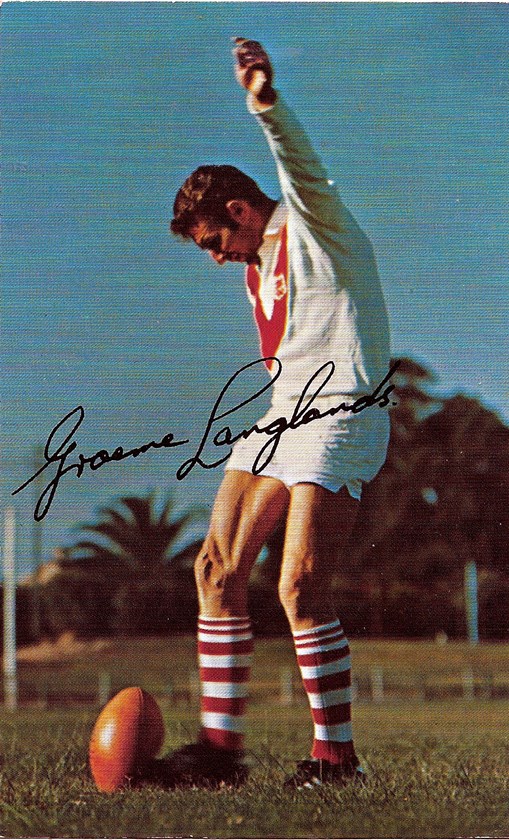
As an 18-year-old he represented Illawarra at basketball. Around the same age he was showing the competitive spirit in the surf, winning musical flag, belt and surf events for Wollongong club.
But it was always going to be Rugby League. For a time his mother Zell resisted — but Graeme kept bringing home football trophies — and she relented.
The accidents and injuries which were to become an unwelcome part of his life were with him even in those early days.
Once he ran a nine inch long wood splinter into his back — and needed hospital treatment to get it out. At 11 he suffered a bad injury to his left hand and for a time they thought he might lose it. Then he needed a cartilage operation after injuring his knee in his first year with Wollongong Rugby League club.
One day in 1961 when torrerrential rain sent floodwaters swirling around Wollongong, Langlands almost lost his life. He was a member of a flood relief party from Wollongong surf club. Another club member managed to grab him by one arm as he threatened to make a rescue attempt in the dangerous waters on the outskirts of the town. But Chang, the greatest survivor of them all, survived.
In 1961 Langlands played his first representative game for Illawarra. The brash teenager with the duck-tail hair cut by that time had firmly established himself in the Wollongong team at fullback.
A good player named Ellis Bridge had been switched to the wing to make room for Chang. Wollongong knew they had a winner — but they didn't know how long they could hang on to him.
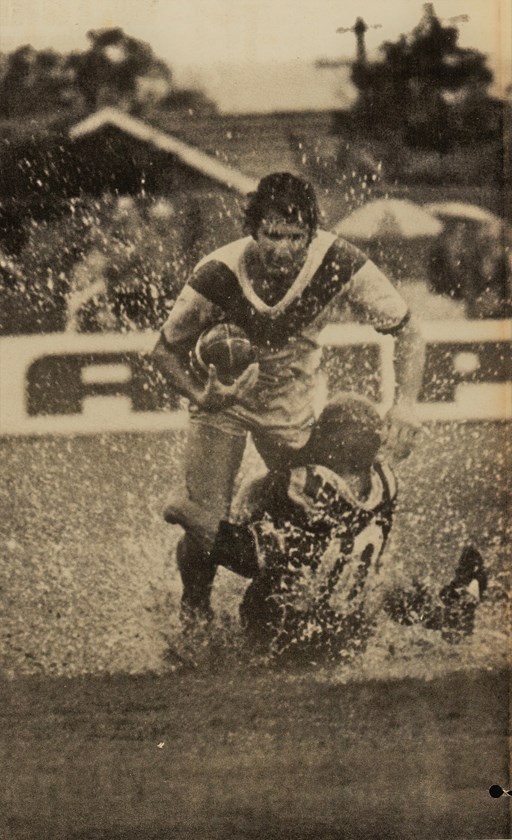
Sydney clubs were already buzzing about the young fullback from the south coast — and another young fullback from the coalfields named Les Johns.
In 1962 Johns was named Country Firsts fullback and Langlands was in Country Seconds.
But fate took a hand. Johns dropped out with injury and the fresh-faced kid from Wollongong got the call-up. The record books tell the rest of the story.
Country, with the skilful Tony Paskins as skipper, skittled the City stars 18-8.
Chang had arrived. That night, flushed with success he had Country team-mate Ron Hopper stopped at St George Leagues club — the old St George Leagues club — to have a couple of celebratory beers.
They were on their way back down the coast. Standing a stone's throw along the bar was Frank "Fearless" Facer, the eagle-eyed St George secretary. After a while Facer came over and talked about the game with Langlands and Hopper over a couple of middies.
It was innocent talk; at that stage Saints didn't want a fullback. They had Brian Graham, a cool customer who was doing the job they wanted.
One month later Graham was transferred to Korea in his job.
Suddenly Saints needed a fullback.
Langlands, the freakish, side-stepping goalkicking kid from the south coast was the one they settled on.
Soon after, one of the most remarkable player-club associations in the history of Rugby League began.
Read part 2 of the Graeme Langlands story on NRL.com on Sunday











